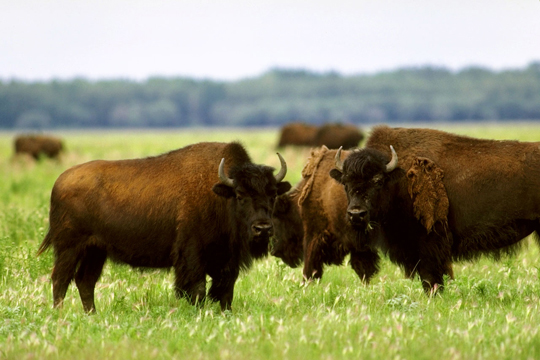Wood Buffalo National Park is a protected area in western Canada. Most of the park is in the province of Alberta, but a portion of it lies in the Northwest Territories. Wood Buffalo National Park covers 11,064,900 acres (4,477,800 hectares) of land. It is the largest national park in Canada and one of the largest in the world.

Gently rolling plains and extensive wetlands make up the landscape of Wood Buffalo National Park. Karst areas, where draining water has dissolved the bedrock, have such features as sinkholes and underground caves and waterways. The Peace River flows through the park, and the Athabasca and Slave rivers flow along its eastern edge.
Wood Buffalo National Park has one of the world’s largest herds of free-roaming wood bison. Other animals living in the park include black bears, caribou, lynxes, moose, and wolves. The park is also home to more than 200 species of birds. The Peace-Athabasca Delta, in the southeastern part of the park, is one of the largest inland freshwater deltas in the world. During the spring and fall, it attracts millions of migrating waterfowl. The northeastern corner of the park has the world’s only natural nesting site of the whooping crane, one of the rarest birds of North America. The park supports a variety of trees, shrubs, and aquatic plants. These include aspen, jack pine, larch, and spruce trees, as well as cattails, duckweed, pondweed, and sedges.
Park activities include camping, canoeing, cross-country skiing, hiking, mountain biking, and snowshoeing. Visitors can paddle along the park’s rivers and into the Peace-Athabasca Delta.
The government of Canada established Wood Buffalo National Park in 1922 to protect the region’s declining population of wood bison. In 1983, the United Nations Educational, Scientific and Cultural Organization (UNESCO) declared the park a World Heritage site as an area of unique natural importance (see World Heritage List ).
